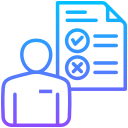A Tour of Tool Categories HR Pros Actually Use
360s capture observable behaviors across peers, managers, and reports, making them great for development and culture building. For selection, use cautiously due to rater biases and logistics. Look for configurable rater groups, normed benchmarks, and rater coaching. Have a 360 story that changed a career? Share it.
A Tour of Tool Categories HR Pros Actually Use
SJTs present realistic scenarios and response options to gauge judgment and interpersonal style. They balance validity with a positive candidate experience and scale well. Evaluate scenario fidelity, scoring transparency, and mobile usability. If you’ve piloted SJTs in frontline hiring, tell us your conversion and quality-of-hire outcomes.
A Tour of Tool Categories HR Pros Actually Use
These tools simulate communication, prioritization, and teamwork under time pressure. They’re engaging, but ask for construct validity, accessibility features, and clear links to job behaviors. Request adverse impact metrics and explain scoring to candidates. Comment if you want a neutral teardown of your shortlisted game-based platform.
A Tour of Tool Categories HR Pros Actually Use
Lorem ipsum dolor sit amet, consectetur adipiscing elit. Ut elit tellus, luctus nec ullamcorper mattis, pulvinar dapibus leo.






